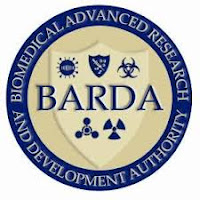The title of this blog almost sounds like an oxymoron. Aminoglycosides are boring, aren’t they? And
they’re old! But with the onward march of antibiotic-resistant infections,
could it be that the aminoglycosides are going to become not only news but
clinically relevant as well? Well . . . . .maybe.
Achaogen has announced
the top line results from their pivotal trials of plazomicin, a (not so) new
aminoglycoside with activity against highly resistant Gram-negative pathogens. They
ran two trials. The first was a
non-inferiority trail using plazomicin compared to meropenem to treat
complicated urinary tract infections. The results are shown here.
Results for FDA pre-specified composite
endpoint of clinical cure and microbiological eradication in the
microbiological modified intent-to-treat (mMITT) population were as follows:
• Day
5: 88.0% plazomicin vs. 91.4% meropenem (difference -3.4%, 95% CI: -10.0,
3.1%), indicating statistical non-inferiority
• Test-of-Cure:
81.7% plazomicin vs. 70.1% meropenem (difference 11.6%, 95% CI: 2.7, 20.3%),
indicating statistical superiority
Results for EMA-specified endpoints of
microbiological eradication at the test-of-cure visit were as follows:
• mMITT:
87.4% plazomicin vs. 72.1% meropenem (difference 15.4%, 95% CI: 7.5, 23.2%),
indicating statistical superiority
• ME:
90.5% plazomicin vs. 76.6% meropenem (difference 13.9%, 95% CI: 6.3, 21.7%),
indicating statistical superiority.
These data indcaite
that plazomicin is at least as effective as meropnem and may even be superior
for cUTI. The trial excluded meropenem-resistant pathogens so it is hard to see why this would be so – but
the data are the data.
The other trial that Achaogen ran was the CARE trail that they discussed at the recent FDA
workshop that was the subject of a previous blog.
The results they reported were from patients with (apparently) known
carbapenem-resistant infections treated with either plazomicin + meropenem or
tigecycline vs. colistin + meropenem or tigecycline. Thus it was a comparison of combination
therapy where the aminoglycoside plazomicin was used as one part of the
combination vs. using colistin. The infections treated were either nosocomial
pneumonia or bacteremia. No breakdown as to the source of the bacteremia was
reported and in an email response to my questions, Achaogen replied that they
were still analyzing the data and had no further information to share as yet.
This is a crucial question (see below).
The results are shown below.
| Plazomicin | Colistin | ||
| 28 day all cause mortality | 4/17 (23.5%) | 10/20 (50%) | |
| or significant complications | |||
| 28 day all cause mortality | 2/17 (11.8%) | 8/20 (40%) | |
Clearly the numbers here are very small. My quick statistical analysis suggests that on the first endpoint
there would be a P value of around 0.07 – a clear trend towards superiority of
plazomicin. But on the second endpoint,
the P value would be closer to 0.2. Yet these are the kind of data that the
regulatory agencies will have to try to interpret as they get into these small
and extraordinarily difficult trials. That an aminoglycoside would be superior
to colistin is not surprising. And I’m
sure these clinical data will be buttressed by strong PK/PD justifications for
the activity of the drug. Finally, when
seen in the light of the large trial in urinary tract infection, the case for
plazomicin becomes stronger.
At the same time, Sanofi has announced
that they are taking over further progression of Warp Drive’s aminoglycoside
program. It seems like 2016 is the year of the aminoglycosides. What the Warp Drive compounds look like – I
have no idea.
The remaining question for
clinicians is, do we really need or want new aminoglycosides? Aminoglycosides are useful in the treatment of TB and serious Enterococcal infections - but our current aminoglycosides are probably adequate there. Among Gram-negative infections, one area where combination therapy with
aminoglycosides might be important is in the treatment of Pseudomonas infections in severely immunocompromised patients. Aminoglycosides are clearly effective in cUTI caused by Gram-negative pathogens. Otherwise, the data suggesting that these compounds work as well as other classes of antibiotics in Gram-negative infections remains controversial. I reviewed some of these data in a recent blog.
My own clinical experience plus data from several studies where my lab
participated suggested that combination therapy of Gram-negative infections with aminoglycosides did not
prevent emergence of resistance and did not reduce mortality compared to
treatment with beta-lactam antibiotics alone. Yet, in these days of increasing
numbers of infections with highly resistant pathogens where colistin is the
only available therapy, an active aminoglycoside might be a welcome
alternative. Opposing this inclination is the market entry of other beta-lactam
antibiotics active against highly resistant pathogens such as Avicaz and others
in the late stage pipeline might that make these new aminoglycosides somewhat
less relevant. Analysts
have estimated a $340 million peak year sales for plazomicin.












